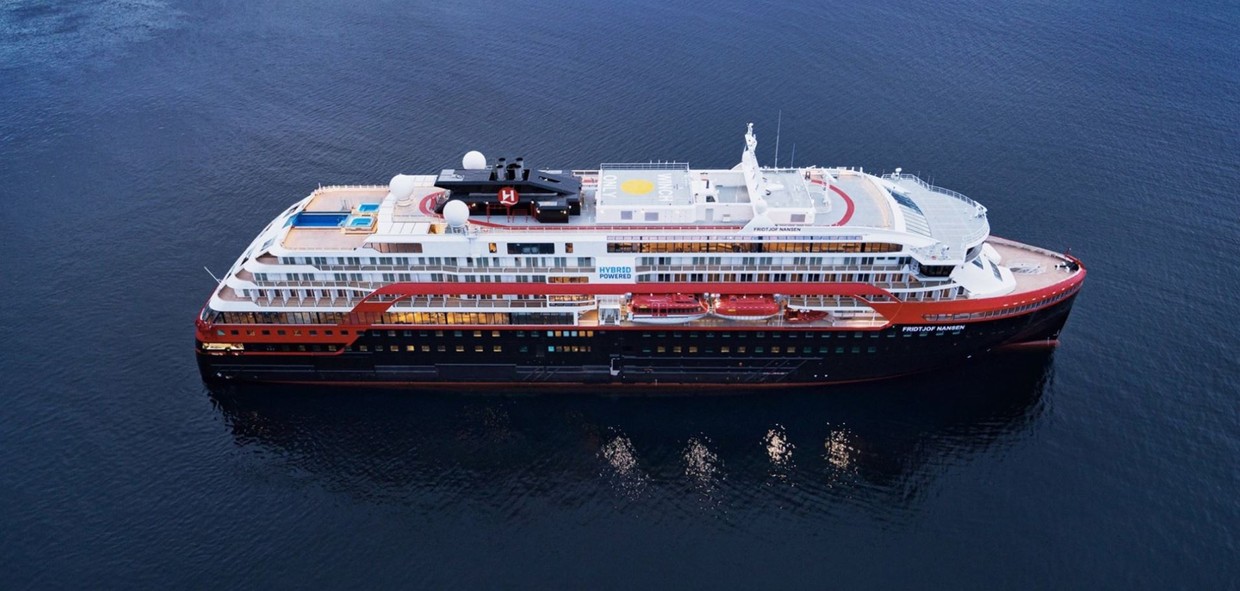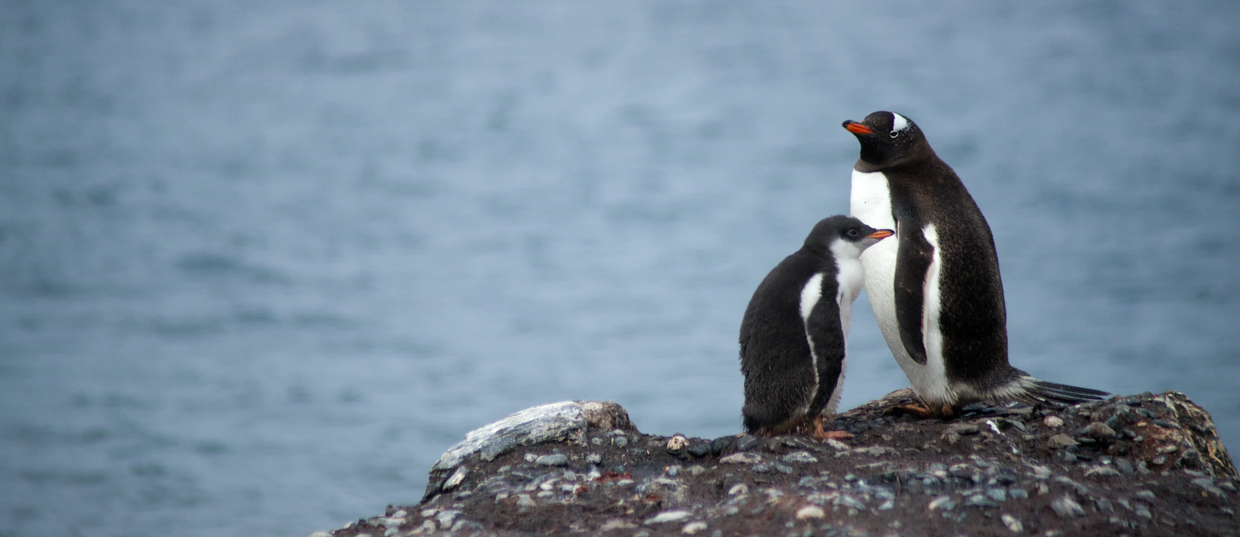from$ 10269 AUD
Note: Current p/p indicative rate. Final price may change due to currency fluctuations.
Fridtjof Nansen
Buenos Aires to Buenos Aires
Overview
The focus of this expedition is on the icy wilderness and heartwarming wildlife of Antarctica. Pick from departures throughout its summer season and enjoy five unforgettable days on the frozen continent with a dedicated Expedition Team. You’ll learn through lectures on a wide range of topics, explore glaciers and icebergs on ice-cruises and go on landings at penguin colonies.
Departures
Cruise Itinerary
Join us at our pre-booked hotel in Buenos Aires
Late nighters beware, we fly early in the morning to Ushuaia where hybrid-powered expedition ship MS Fridtjof Nansen awaits you. This port city competes with Chilean Puerto Williams for the seemingly coveted title of the southernmost city in the world. The Martial Glacier sits north of the city, creating an impressive mountain backdrop for the ‘end of the world’. After a mandatory health and safety meeting on board the ship, kick off your journey with a welcome dinner hosted by the Expedition Team. You can then spend some time getting to know the ship that will be your home for the next several days.
In order to get to Antarctica, we have to cross the infamous Drake Passage. It was named after the English sea captain and privateer Sir Francis Drake who discovered it by chance in 1578 when his ship was taken south by heavy winds. Since there is no landmass at this latitude, wind and water roam freely, making it hard for ships to sail here. But don’t worry, even the ‘Drake Shake’ isn’t a big deal for our modern expedition ship. It takes two days to cross the roughly 1000-km-wide Drake Passage. So, you’ll have some time on your hands, which is definitely a good thing as there is plenty to do to get ready for your Antarctic adventure. The Expedition Team will start their lecture programme in the Science Center, drawing on decades of experience to teach you how to make your visit as safe and as sustainable as possible. As per IAATO guidelines, we will all wear sterilised rubber boats when ashore and ensure we vacuum our clothing beforehand to remove any possible foreign contaminants. You will also learn about the various hands-on Citizen Science projects you can get involved in, all of which feed into live research and current science. MS Fridtjof Nansen, lies at your feet to be explored as well, quite literally. Work out in the indoor or outdoor gym, or order a spa treatment in our Wellness Area. There are also three superb restaurants on board where you can enjoy delicious meals that are a treat for your eyes and your taste buds. But even with all these mod cons, don’t forget to head out on deck from time to time to look for your first iceberg, and to spot wildlife like whales, numerous types of petrels and albatrosses.
Welcome to Antarctica. Being here, surrounded by icy waters, glaciers and icebergs big as cathedrals will probably make you feel like you’ve landed in a completely new world. Antarctica is magnificent, mesmerising and massive. You might need to stop for a moment to be able to take it all in. That awe-inspired silence is inevitably broken though when you see the first signs of wildlife like penguins, whales or seals and enthusiastic cheers erupt spontaneously all across the ship. Just as the icescapes of Antarctica change through its seasons, so does its wildlife. In late spring from October to November, there will be much more snow, making the landscapes seem even more pristine. This forms the backdrop of penguin courting and nest building. Whales are still few and far in between during this time, most of them still on their way and beginning to arrive in greater numbers by December and January. Arrival of more whales marks the height of summer which is also when the first penguin chicks hatch. Seeing the clumsy clumps of feathers run around and is always a charming sight. February and March are the peak of whale-watching opportunities, when large amounts of krill lure them to the area. When we get here, the Expedition Team will seize every chance to take you ice-cruising and on landings to get closer to the impressive scenery and wildlife. Spotting penguins from the ship is already an experience, which becomes even more wonderous when you go ashore to see them. It’s the same if a seal or whale suddenly appears next to you when cruising in our smaller explorer boats or when kayaking as part of an optional activity. Needless to say; keep your camera close at all times. To enhance your feeling of discovery, the Expedition Team will talk expertly about fascinating subjects like the frozen continent’s history, the biology of local wildlife, and glaciology.
After having explored remote and wild Antarctica over five days, we will be due to sail back for home. By this point, both your head and your heart will be filled with lifelong memories. You’ll hopefully also have captured many of these special moments on your camera. Crossing back over the Drake Passage, you’ll probably spend the next couple of days going through those pictures just to try and stay in Antarctica a little longer. The Expedition Team will also be doing the same as they recap the journey’s many experiences over in the Science Center. Working out is also a great way of processing everything you have seen, or maybe let your mind wander back to Antarctica in the Explorer Lounge and Bar?
Your expedition cruise reaches its end as we return to Ushuaia. From here, you join a transfer to the airport for your flight back to Buenos Aires and a second chance to experience the Argentine capital. Upon arrival from your charter flight you will be transferred to your hotel for an overnight stay.
These expedition cruises travel to some of the most remote and pristine waters of the world. As with all expeditions; nature prevails. Weather, and ice and sea conditions, sets the final framework for all operations. Safety and unparalleled guest experiences are at all times our top priorities. All our indicative itineraries are continuously evaluated for adaptions, whether this is due to constraints the elements unexpectedly presents – or exciting possibilities nature and wildlife offer. That is why we call it an expedition.
Fridtjof Nansen

Vessel Type: Expedition Length: 140 m Passenger Capacity: 530 Built: 2020 MS Fridtjof Nansen is the latest addition to Hurtigruten’s fleet of custom built ships – and the next generation expedition ship. She will explore some of the most spectacular corners of the globe. Featuring Hurtigruten's revolutionary battery hybrid powered propulsion system, MS Fridtjof Nansen will be a near identical twin to her sister ship MS Roald Amundsen. Combining state of the art technology and premium on board experience with Hurtigruten’s 125 years of experience and unparalleled destinations, the two Norwegian built ships introduces the next generation of adventure travel. Cabins and public areas The stunning scenery will be reflected in a rich and comfortable interior design. Scandinavian materials from nature, such as granite, oak, birch and wool will be used to create relaxed and stylish cabins and public areas. All cabins are outside, 50 % will have private balconies, aft suites will feature private outdoor hot tubs with spectacular views. Science Center The core of the onboard experience is the Nansen Science Center, an edutainment venue to guests and crew meet to create a deeper understanding of the areas we explore. Nansen Science Center will also be the on board HQ for the Expedition Team. Restaurants MS Fridtjof Nansen's three restaurants will host a variety of dining options, with menus drawn from our rich Norwegian and Nordic tradition, as well as international cuisine and local inspiration. Whether enjoying your meal at Aune Main Dining, Fredheim – the informal international meeting place, or the specialty restaurant Lindstrøm, you will indulge in low key yet refined, modern Norwegian Nordic cooking – where our honest and delicious cuisine reflects our destinations. After a day of exploring new destinations, guests can relax and rejuvenate in the elegant Explorer Lounge, a large gym and Wellness center, or enjoy the scenery and sunsets on the massive in- and outdoor Observation Decks with the aft infinity pool and hot tubs as one of the highlights. Everything you need for an expedition cruise Each expedition voyage is accompanied by a hand-picked team of specialists and modern-day explorers. Highly experienced, passionate and knowledgeable, the Expedition Team will be your guides and guardians on your voyage of exploration, instructing you on safety, sustainability and science. MS Fridtjof Nansen will feature a variety of custom built expedition equipment, including kayaks, a fleet of Blueye underwater drones and Expedition Boats for safe landings in remote areas. In the footsteps of a great explorer The newest addition to our fleet will honor the heritage of her namesake – the Norwegian explorer, scientist, humanitarian and Nobel Peace Prize laureate Fridtjof Nansen. Known for his innovations in Arctic expeditions, Nansen led the first crossing of Greenland on cross-country skis. He is perhaps most famous for his attempt to reach the geographical North Pole during the Fram Expedition (1893-1896). Interestingly, after Nansen's Fram expedition, the ship was passed on to another great explorer who secretly planned an expedition to the South Pole - Roald Amundsen.
Highlights
• Experience the Antarctic Peninsula and its surrounding islands during summer • Ice-cruises and landings bring you to see glaciers, icebergs, seals and penguins • Our hybrid-powered expedition ship creates the lowest possible CO2 footprint • Experienced Expedition Team will deliver lectures and accompany landings
Map



